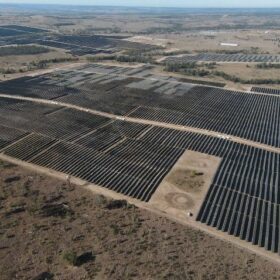The new site will increase the vertical integration efficiency, and ramp up its N-type production while saving transfer costs of semi-finished products among different locations. On top of that, JinkoSolar is utilizing the green electricity provided in Shanxi. While there is plenty of room for speculation concerning the green supply chain and future modules, JinkoSolar’s entry into the zero-carbon vertical integrated production is becoming more concrete.
JinkoSolar’s decision to set up a vertically integrated manufacturing platform in Shanxi was a desire to gain a competitive advantage over other solar companies by increasing efficiency and reducing their footprint.
“Our new vertical integrated manufacturing base in Shanxi will allow more work simultaneously at the same location, meaning we can build more panels at lower cost & with a much smaller carbon footprint,” said Dany Qian, VP of JinkoSolar.
Another important driver behind the choice of Shanxi as the site of the new plant is the green electricity long-term supply committed by the local government and utility guarantee to priority supply JinkoSolar zero carbon powers for production to assist the company’s RE100 goal. “Shanxi’s renewable power resources and supply have been shaped. We will be able to draw on these long-standing green power infrastructures to implement our RE100 goal,” said Dany Qian.
In addition to being renewable rich, Shanxi is found to be an exceptionally advantageous place to manufacture. This is due not only to its proximity to China’s northwest region where most domestic utility projects are located but also close to Tianjin seaport for export. It will give the plant easy access to serve both domestic and overseas markets, ensuring reduced logistics costs.
A centralized vertical integration chain can exert tremendous control over every point of the chain from ingots to wafers to cells and modules, and enhance traceability and transparency. With its well-developed N-type technology and manufacturing excellence, JinkoSolar is well-positioned as the leader of the N-type production and plays vertical integration to the extreme. The scale advantage and conglomerate effect will also attract key partners such as equipment and raw material suppliers to gather adjacent, facilitate joint R&D, risk identification, and price hedging, and speed up new technology transition to lines, shorten the lead time of go-to-market.
With n-type TOPCon being mainstream, JinkoSolar faces increasing competition from other firms that are now producing TOPCon products. In 2023, the industry capacity of TOPCon could be between 120-130GW, and the company’s share of the TOPCon global market is about 40%. But corporations such as JA Solar, Trina, Canadian Solar, and Risen have expanded their TOPCon capacity, so between 2024-2025, the global n-type capacity will ramp up to 250-280 GW.
JinkoSolar’s 56 GW n-type vertical integration project in Shanxi appears to be part of its strategy to reduce the production cost of TOPCon products by streamlining the whole process in one site and launching a more accessible and zero carbon-complete line of N-TOPCon. It should be celebrated as a sign of its n-type technological capability, capacity, vertical integration to the extreme, manufacturing know-how, and highly renewable-powered ratio.






By submitting this form you agree to pv magazine using your data for the purposes of publishing your comment.
Your personal data will only be disclosed or otherwise transmitted to third parties for the purposes of spam filtering or if this is necessary for technical maintenance of the website. Any other transfer to third parties will not take place unless this is justified on the basis of applicable data protection regulations or if pv magazine is legally obliged to do so.
You may revoke this consent at any time with effect for the future, in which case your personal data will be deleted immediately. Otherwise, your data will be deleted if pv magazine has processed your request or the purpose of data storage is fulfilled.
Further information on data privacy can be found in our Data Protection Policy.